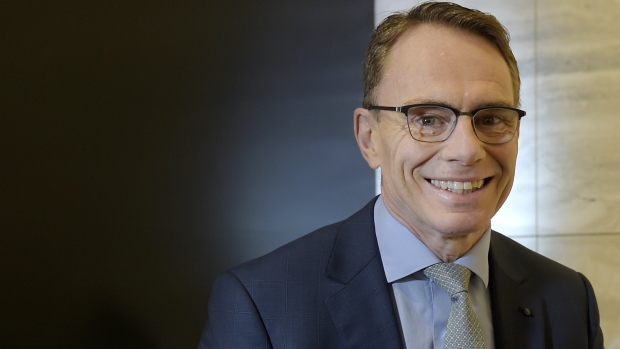Aug 21, 2018
BHP CEO says biggest miner can reward investors and fund growth
, Bloomberg News

BHP Billiton Ltd. will target higher oil output and can accelerate development of growth projects in other key commodities after using stronger profits to cut debt and reward investors.
The world’s biggest miner has nine major projects underway and is spending almost US$1 billion this year on exploration, Chief Executive Officer Andrew Mackenzie said Tuesday in an interview with Bloomberg Television. Capital expenditure is forecast by the company to rise by as much as 18 per cent to US$8 billion this year.
Even after trimming debt and lifting returns, “there has been money left over to grow the company in the future, and there’s lots more to come,” Mackenzie said after BHP reported full-year underlying profit jumped 33 per cent to a four-year high. “We have a cupboard full of options for the short, medium and long term in all of our commodities.”
Rio Tinto Group and Anglo American Plc are advancing new projects and expansions as the sector begins to embrace growth. Anglo last month approved a US$5 billion copper mine in Peru, while Rio is building a bauxite mine in Australia and leading the US$5.3 billion expansion of Mongolia’s Oyu Tolgoi copper and gold operation.
Melbourne-based BHP can fund both improved shareholder returns and underwrite developments after net debt was cut by US$15 billion over two years to within the company’s target range, Mackenzie said. BHP paid a record final divided, though confirmed it’ll be later this year before it sets out plans to return to investors the bulk of about US$11 billion in proceeds from the sale of its shale assets in the U.S.
The sector’s efforts to lower debt and sell unwanted assets since a 2015 commodities crash means companies are well-positioned to maintain returns, ride out volatility in prices and pursue selective growth, according BlackRock Inc.’s World Mining Trust, which holds BHP shares.
BHP and its largest competitors “have better profitability, are better placed financially with lower debt and that means you do start to look at returns to shareholders first, and then at growth,” Peter O’Connor, a Sydney-based analyst at Shaw and Partners Ltd., said by phone.
BHP’s shares declined 1.9 per cent in Sydney trading -- as the mining benchmark index lost 1.4 per cent -- after executives said the additional investor returns won’t be immediate and the company flagged some higher production costs as well as delays to a planned US$2 billion program of productivity gains. Net profit slumped on more than US$5 billion of impairment charges tied to the shale unit and to U.S. tax reforms.
Conventional oil is a priority for BHP as it seeks to reverse a production decline and capture rising prices, according to Mackenzie. The producer, with operations in the Gulf of Mexico and Australia, forecasts output to fall as much as 6 per cent this fiscal year as fields decline. “We will look to accelerate production now in order to capture favorable prices,” and could consider an acquisition to add output, he told analysts on an earlier call.
The producer is also seeking to add copper production with the market likely to move into a structural deficit early in the next decade that’ll send prices higher. BHP’s Olympic Dam operation in South Australia is currently suffering an outage at an acid plant and the impact is being assessed, the company said in a statement.
BHP has a pipeline of about US$4 billion of potential projects across commodities to upgrade existing operations, including at Escondida, the world’s No. 1 copper mine, and its Australian iron ore operations, the company said in a May presentation. A longer-term list includes US$15 billion of possible developments in copper to potash.
Despite global trade tensions, there’s also little cause for alarm on the outlook in China, the top commodities consumer, Mackenzie said in the Tuesday interview. “We’re not seeing any slowdown in China -- perhaps a little bit in copper, everything else is going well,” he said.


